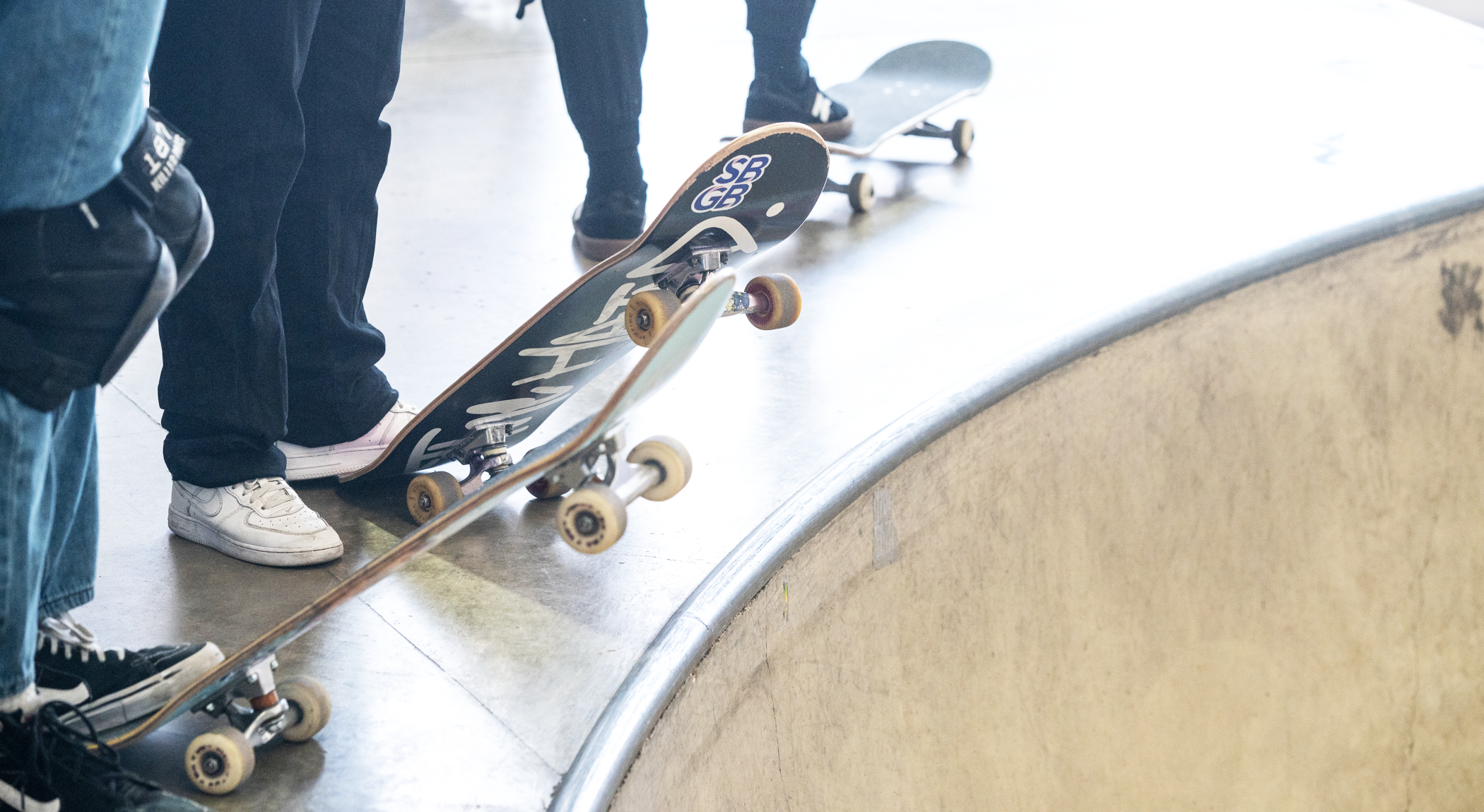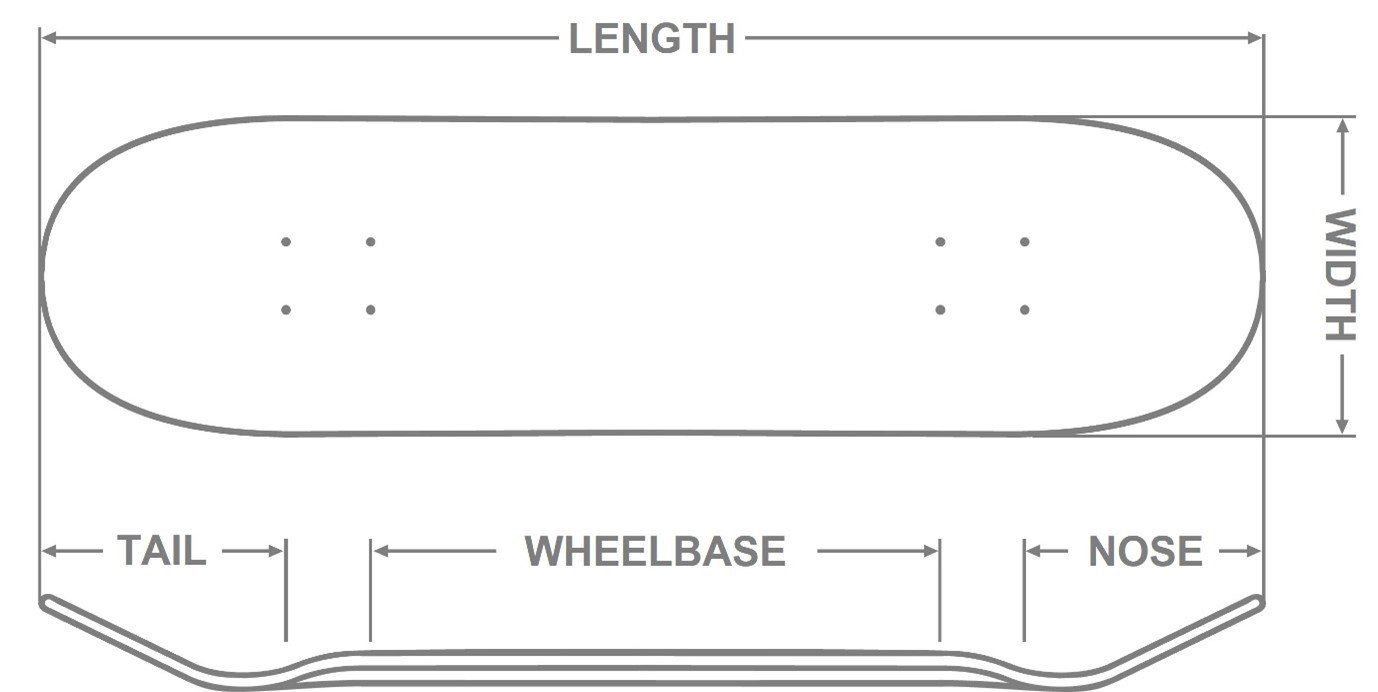Skateboard Buying Guide
WORDS BY CHRIS WRIGHT
As you get into skateboarding and find your own style, choice of setup really comes down to personal preference but for the total beginner, it can be difficult to know where to start. We have created this guide to help get you on a board that will best suit your needs, in the early stages of your skateboarding journey.
Where to buy?
Before we get into the different types of boards, we need to answer this very important question.
The best option is to seek out your nearest skate shop and pay them a visit. There really is no substitute for speaking face to face with an expert, who can talk you through all the options and help you find or create a setup that is just right for you. They will also know all the best places to skate in your area and can keep you updated on local events.
While there is no real substitute for buying in store, sometimes it isn’t an option. Fortunately, in the UK, there are also a number of specialist online retailers to choose from. Online retailers also offer some other benefits, such as a broader range of product and great deals on completes and custom builds.
Whether you are shopping in store or online, the key thing is to make sure you go to a specialist skate shop. Highstreet sports retailers and toy shops usually only sell toy skateboards. While they may often look the part, they are just toys and will significantly hinder your progress.
Board/Deck
Boards come in a wide variety of shapes and sizes, with widths ranging from around 7 ½” to 10” and wheelbase ranging from around 12 1/2” to 14”.
When determining what size board to go for, first thing to think about is your ability.
If you have never stood on a skateboard before and you are looking to learn the absolute basics, like pushing around, carving and doing kickturns, then bigger is usually better! Even for smaller skaters, a bigger board, bigger trucks and bigger wheels all combine to give you a really stable setup that will help you build your confidence, allowing you to progress more quickly.
If you already have a bit of experience on a board and you are wanting to learn some tricks, you need to take a couple more things into account. The first being your size.
The most important dimension is your height and as a general rule of thumb, the taller you are, the bigger you want your board to be, both in terms of width and length. Wider boards are also stronger so if you are a heavier rider, this is something to bear in mind.
Next thing to consider is the style of skating that appeals to you. Whether you are skating street or transition, If you want to go fast and skate big obstacles, a bigger board offers more stability. If you want to do more technical tricks, a smaller board is more responsive.
Griptape:
When you buy a complete skateboard, it will already be gripped. When you buy a deck on its own, the grip tape has to be applied before setup. This can be a tricky job so it’s often worth asking the shop to apply it for you, at least on your first board (when buying online, this is often an option at checkout). If however you want to have a go yourself there are plenty of videos online to show how it is done.
Trucks
The first thing to consider is size. Ideally you want your truck axle to be the same width as your board. While some brands measure their trucks by the width of the axle, many measure by the width of the hanger, your local skate shop will know which size you need and most online retailers will have a conversion chart or tell you which board widths certain trucks are suitable for. Some trucks also come in high and low options. If you are running wide trucks and big wheels, a taller truck will help prevent wheel bite, while lower trucks are generally better suited to narrower setups with smaller wheels.
The final thing to consider with trucks is the hardness of the bushings. These determine how much pressure is needed to turn the board. Most trucks come with medium to hard bushings, somewhere around 90a-94a, but softer bushings are available separately, all the way down to 78a.
As you progress with your skating, you will develop your own preference for how tight you like your trucks but when starting out, a firmer setup is usually preferable as it offers more stability. A key factor when choosing bushings is your weight and small children, in particular, will often need a softer bushing than those provided by the manufacturer.
Once you have the right bushings, you can fine tune your board feel by tightening or loosening the kingpin.
Wheels
The two main things to consider when buying wheels are size and hardness.
Bigger wheels roll faster and offer better stability but they are heavier and depending on the height of your trucks, they can be more prone to catching the board when you turn hard. This is called wheel bite. Smaller wheels are better for technical tricks but they don’t roll well on rough surfaces.
Softer wheels roll faster on rough ground and offer better stability making them a good choice for most beginners. Hard wheels are faster on smooth surfaces and are usually the best option if you are spending lots of time at the skatepark. Hard wheels also make it easier to slide in and out of certain tricks.
Bearings:
High performance bearings will have little impact on your skating when you are just starting out so it is best to start with something basic. Most bearings come as standard with rubber seals, which are good for keeping dirt out, especially if you are skating outside on a regular basis.
(For some years now there has been a tendency for companies to state the ABEC rating of their bearings on their packaging and in their product descriptions. The ABEC rating was actually devised for industrial applications and has little relevance to their application in a skateboard.)
Tube spacers are cheap and worthwhile addition to your wheel setup. They help keep your bearings aligned, making them roll faster, particularly when carving. They also help extend the life of your bearings.
Complete or custom?
Now you have an idea of what you want you need to think about whether you want to buy a complete or a custom setup. Buying a complete is often a good option, when you are just starting out. You don’t need to worry about whether all the parts will fit together, you don’t even need to worry about putting all the parts together. It all comes ready to skate, straight out the box.
Complete boards also tend to be cheaper. Sometimes this is because the components used are more “entry level” but even those with “pro level” components can offer great value for money when compared to a similar custom setup.
The parts on completes are mostly interchangeable with parts you can buy separately so when things wear out or if you want to upgrade something, you don’t have to start from scratch. You might also buy a complete and tweak it to suit your needs, like fitting softer wheels or softer bushings, depending on your ability and style of skating.
With all that said, there is nothing quite like building a custom board from scratch. You can tailor everything to your exact requirements, and tastes, matching your favourite graphic to your favourite wheels, trucks, custom grip tape, etc. Getting your first custom board put together, by your local skate shop, is an experience unlike any other and a memory that stays with many skaters for life.



